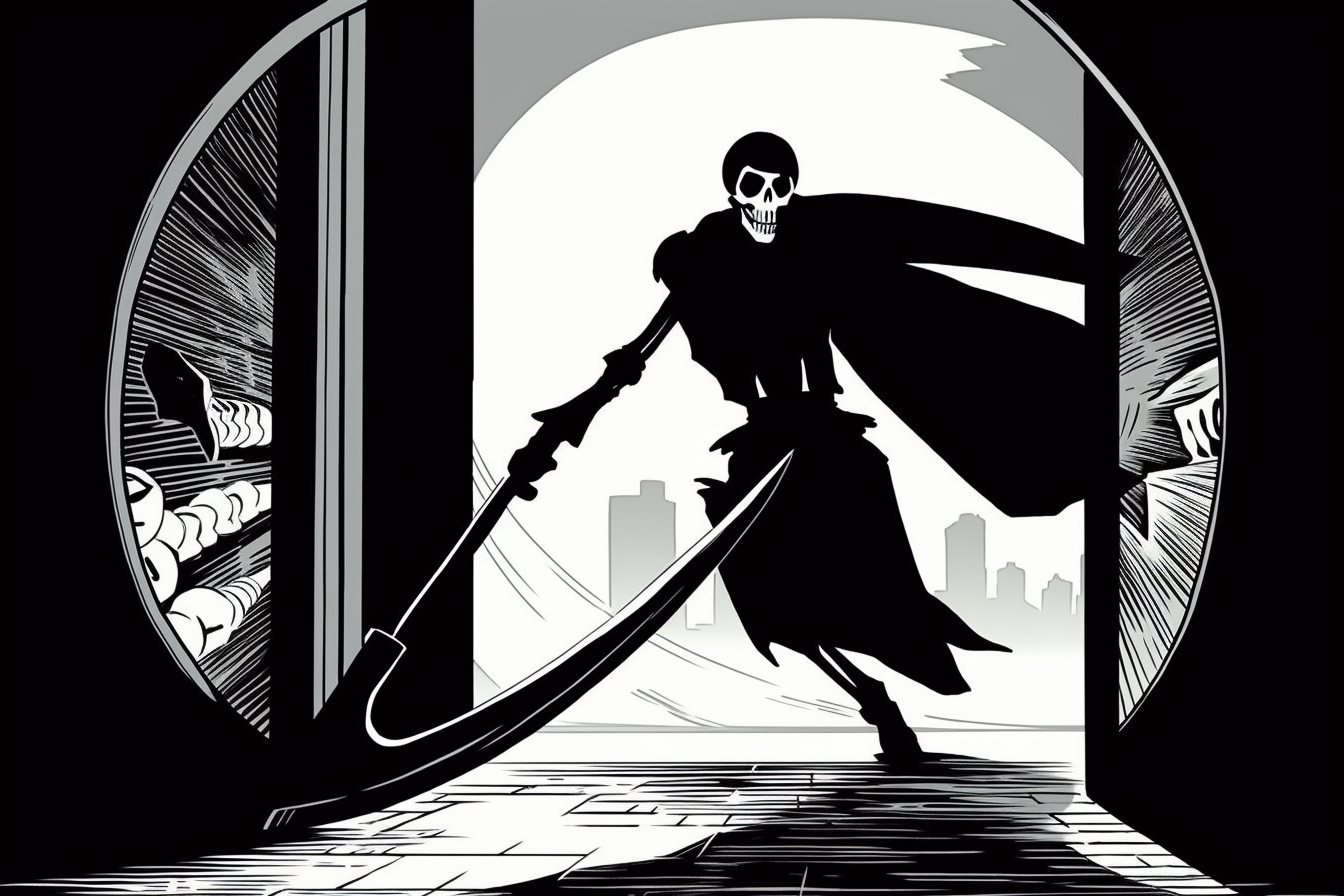
DISCUSSING
In the Shadow of the Spire – Session 32B: Shaped by Venom
A beam of scintillating energy shot out from a second door – only slightly cracked – and struck the barbarian in the chest, paralyzing him completely. Agnarr was completely defenseless as one of the thralls thrust its lance-like claw through his chin and up into his skull, killing him instantly.
Oh no! Agnarr! I can’t believe this! How will his death reshape the campaign? What will be the emotional fallout? What new character will his player create?
With the entryway cleared, Dominic came around the corner, looked at Agnarr’s grievous wound, and sighed heavily.
(…)
As Tee came back inside, she saw that Agnarr was shaking his head gingerly – Dominic had resealed the bond between his soul and body.
Oh. Never mind.
For the In the Shadow of the Spire campaign, and other 3rd Edition games, I used a set of house rules for death and dying designed to narratively smooth out the “you’re dead, you’re back, you’re dead, you’re back, you’re dead” up-and-down cycle that can emerge in D&D, but it’s nevertheless true that once you start hitting the upper range of what we’d now call Tier 2 the PCs’ relationship to death shifts.
Raise dead really is a game changer.
This used to be less true. In AD&D, for example, a character could only be returned to life with raise dead or resurrection effects a number of times equal to their Constitution score. (This could eventually be surpassed with a wish spell, but obviously only at a much later point in the campaign.)
(At least in theory. The fact that 3rd Edition began eliminating such consequences because they weren’t fun is largely because a wide swath of people were already ignoring them because they weren’t fun. But I digress.)
Regardless, most D&D protagonists will reach a point where their relationship is largely unique in storytelling. Superheroes often experience a revolving door of death, but it’s rarely seen that way by the character except for comical asides or fourth-wall breaks. Video games will have stuff like phoenix down that will “revive” companions who are “dead,” but this is usually ludonarrative dissonance with these games nevertheless featuring actual death in their cutscenes.
The same sort of ludonarrative dissonance — a disconnect between the story of the game and the mechanics of the game — is something that will often crop up in D&D campaigns: You instinctively want death to have the same meaning that it does in stories or real life, but the reality is that it doesn’t. Dominic’s reaction to seeing Agnarr’s impaled corpse may be distress, but it really shouldn’t be the same emotional reaction that someone in the real world seeing their companion’s corpse would have. Because the reality Dominic and Agnarr are living in is just fundamentally not the same.
And, in my opinion, that’s OK. It’s fascinating, even.
I think there’s kind of two ways to deal with this.
First, you can try to treat death in a mid- or high-level D&D game as if it were emotionally and factually the same as death in the real world. If you take this approach, though, I think you’ll be best served if you actually house rule the game to match the vision of what you want (and sustain ludonarrative harmony). That would mean getting rid of spells like raise dead, and if you do that, you’ll probably also want to modify the mechanics around dying, your scenario design, or both.
Second, lean into it. Death doesn’t have the same meaning. So what meaning DOES it have, both emotionally and factually? And what are the unique stories that you can tell with that meaning?
A sentiment I often see in a variety of places (discussions of prequel movies, for example) is that if a character can’t die, then there’s nothing at stake. This can be a particularly alluring belief when it comes to a D&D because, other than the outcomes of specific die rolls, death IS the only mechanically defined thing at stake in the game.
But it’s not really true, of course, because the experience of playing D&D is much more than just the sum of its mechanics. And, particularly in fiction, life-or-death is often the least interesting thing at stake.
Campaign Journal: Session 32C – Running the Campaign: Non-Combat Goals
In the Shadow of the Spire: Index











